Pit Boss PB820SC Le manuel du propriétaire
- Catégorie
- Barbecues
- Taper
- Le manuel du propriétaire

INSTRUCTIONS AND RECIPES
|
INSTRUCTIONS ET RECETTES
|
INSTRUCCIONES Y RECETAS
WARNING: Please read the entire manual before installation and use of this electric, pellet fuel burning appliance.
Failure to follow these instructions could result in property damage, bodily injury or even death. Contact local
building or fire officials about restrictions and installation inspection requirements in your area.
AVERTISSEMENT : Veuillez lire l'intégralité du manuel avant l'installation et l'utilisation de cet appareil
électrique, à granules. Ne pas suivre ces instructions peut entraîner des dégâts matériels ou des blessures
corporelles graves pouvant aller jusqu'à la mort. Contactez les responsables locaux de la construction ou des
incendies au sujet des restrictions et des exigences d'inspection de l'installation dans votre région.
ADVERTENCI: Lea el manual completo antes de instalar y utilizar este aparato eléctrico para quemar pellets de
combustible. Incumplir estas instrucciones podría causar daños materiales, lesiones corporales, e incluso la
muerte. Consulte a sus funcionarios locales de construcción y control de incendios para informarse sobre las
restricciones y los requisitos de inspección de instalaciones en su región.
ITM. / ART. 1500114
MODEL / MODÈLE / MODELO: PB820SC
PART / PIÈCE / PARTE: 72825
PB820SC
IMPORTANT, READ CAREFULLY, RETAIN
FOR FUTURE REFERENCE. MANUAL MUST
BE READ BEFORE OPERATING!
IMPORTANT, PRENEZ CONNAISSANCE DE CE DOCUMENT
ET CONSERVEZ-LE POUR RÉFÉRENCE ULTÉRIEURE VOUS
DEVEZ LIRE CE GUIDE AVANT D’UTILISER LE BARBECUE !
IMPORTANTE, LEA DETENIDAMENTE, CONSERVE PARA
REFERENCIA FUTURA. ¡DEBE LEER EL MANUAL ANTES
DE LA OPERACIÓN!
FOR OUTDOOR USE ONLY. NOT FOR COMMERCIAL USE.
POUR UN USAGE EXTÉRIEUR. PAS POUR USAGE COMMERCIAL.
SÓLO PARA USO EXTERIOR. NO ES PARA USO COMERCIAL.

ENGLISH
2
.
.
Please read and understand this entire manual before attempting to assemble, operate or install the product. This will ensure
you receive the most enjoyable and trouble-free operation of your new wood pellet grill. We also advise you retain this manual
for future reference.
DANGERS AND WARNINGS
You must contact your local home association, building or fire officials, or authority having jurisdiction,
to obtain the necessary permits, mission or information on any installation restrictions, such as any grill
being installed on a combustible surface, inspection requirements or even ability to use, in your area.
1. A minimum clearance of 305mm (12 inches) from combustible constructions to the sides of the grill, and 305mm (12 inches)
from the back of the grill to combustible constructions must be maintained. Do not use this appliance indoors or in an
enclosed, unventilated area. This wood pellet appliance must not be placed under overhead combustible ceiling or overhang.
Keep your grill in an area clear and free from combustible materials, gasoline and other flammable vapors and liquids.
Should a grease fire occur, turn the grill OFF and leave the lid closed until the fire is out. Do not unplug the power
cord. Do not throw water on the unit. Do not try to smother the fire. Use of an all-class (class ABC) approved
fire extinguisher is valuable to keep on site. If an uncontrolled fire does occur, call the Fire Department.
2. Keep electrical supply cords and the fuel away from heated surfaces. Do not use your grill in the rain or around any water
source.
3. After a period of storage, or non-use, check the burn grate for obstructions, the hopper for foreign objects, and any air blockage
around the fan intake or rear barrel exhaust holes. Clean before use. Regular care and maintenance is required to prolong the
lifespan of your unit. If the grill is stored outside during the rainy season or seasons of high humidity, care should be taken
to insure that water does not get into the hopper. When wet or exposed to high humidity, wood pellets will expand greatly,
decompose, and may jam the feed system. Always disconnect the power, before performing any service or maintenance.
Do not transport your grill while in use or while the grill is hot. Ensure the fire is completely out and that
the grill is completely cool to the touch before moving.
4. It is recommended to use heat-resistant barbecue mitts or gloves when operating the grill. Do not use accessories not specified
for use with this appliance. Do not put a barbecue cover or anything flammable in the storage space area under the barbecue.
5. To prevent fingers, clothing or other objects from coming in contact with the auger feed system, the appliance is equipped
with a metal safety screen, mounted to the interior of the hopper. This screen must not be removed unless directed by
Customer Service or an authorized dealer.
This appliance is not recommended for children, persons with reduced physical, sensory or mental
capabilities, or lack of experience and knowledge, unless they are under direct supervision or instruction
by a person responsible for their safety.
6. Parts of the barbecue may be very hot, and serious injury may occur. Keep young children and pets away while in use.
7. Do not enlarge igniter holes or burn pots. Failure to follow this warning could lead to a fire hazard and bodily harm and will
void your warranty.

ENGLISH
3
DISPOSAL OF ASHES
Ashes should be placed in a metal container with a tight-fitting lid. The closed container of ashes should be placed on a non-
combustible floor or on the ground, well away from all combustible materials, pending final disposal. When ashes are disposed by
burial in soil, or otherwise locally dispersed, they should be retained in a closed container until all cinders have thoroughly cooled.
WOOD PELLET FUEL
This pellet cooking appliance is designed and approved for pelletized, all natural, wood fuel only. Any other type of fuel burned in
this appliance will void the warranty and safety listing. You must only use all natural wood pellets, designed for burning in pellet
barbecue grills. Do not use fuel with additives.
Do not use spirit, petrol, gasoline, lighter-fluid or kerosene for lighting or refreshing a fire in your grill.
At this time of printing, there is no industry standard for barbecue wood pellets, although most pellet mills use the same standards
to make wood pellets for domestic use. Further information, can be found at
www.pelletheat.org
or the
Pellet Fuel Institute
.
Contact your local dealer on the quality of pellets in your area, and for information on brand quality. As there is no control over
the quality of pellets used, we assume no responsibility to damage caused by poor quality of fuel.
CREOSOTE
Creosote, or soot, is a tar-like substance. When burning, it produces black smoke with a residue which is also black in color. Soot
or creosote is formed when the appliance is operated incorrectly, such as: incorrect position of the burn grate, blockage of the
combustion fan, failure to clean and maintain the burn area, or poor air-to-fuel combustion.
It is dangerous to operate this appliance should the flame become dark, sooty, or if the burn pot is overfilled with pellets. When
ignited, this creosote makes an extremely hot and uncontrolled fire, similar to a grease fire. Should this happen, turn the unit OFF,
let it cool completely, then inspect for maintenance and cleaning. It commonly accumulates along exhaust areas.
If creosote has formed within the unit; allow the unit to warm up at a low temperature, turn off the appliance, then wipe away
any formation with a hand towel. Similar to tar, it is much easier to clean when warm, as it becomes liquid.
CARBON MONOXIDE (“ ”)
Carbon monoxide is a colorless, odorless, tasteless gas produced by burning gas, wood, propane, charcoal or other fuel. Carbon
monoxide reduces the blood’s ability to carry oxygen. Low blood oxygen levels can result in headaches, dizziness, weakness,
nausea, vomiting, sleepiness, confusion, loss of consciousness or death.
See a doctor if you or others develop cold or flu-like symptoms while cooking or in the vicinity of the appliance. Carbon monoxide
poisoning, which can easily be mistaken for a cold or flu, is often detected too late.
Alcohol consumption and drug use increase the effects of carbon monoxide poisoning.
Carbon monoxide is especially toxic to mother and child during pregnancy, infants, the elderly, smokers, and people with blood
or circulatory system problems, such as anemia, or heart disease.
SAFETY LISTING
In accordance with the procedures and specifications listed in the UL Subject 2728-2009 "pellet fuel
cooking appliances" and / 272 and Canadian 22.2 #3 "for electrical features of fuel
burning equipment." Pit Boss Grills pellet cooking appliances have been independently tested and
listed by Intertek (an accredited testing laboratory) to , , and standards.

ENGLISH
4
COPYRIGHT NOTICE
Copyright 2017. All right reserved. No part of this manual may be
copied, transmitted, transcribed, stored in a retrieval system, in any
form or by any means without expressed written permission of,
Dansons Inc.
3411 North 5th Avenue, Suite 500, Phoenix, , 85013
sales@pitboss-grills.com | service@pitboss-grills.com
www.pitboss-grills.com
Toll-Free: 1-877-303-3134, Fax: 1-877-303-3135

ENGLISH
5
Safety Information .......................................................... 2
Parts & Specs ......................................................................6
Assembly Preparation ...................................................... 7
Assembly Instructions
Mounting The Wheels To The Legs ......................................... 7
Assembling The Cart .................................................................... 7
Mounting The Cart Panels .......................................................... 7
Installing The Cart To The Barrel ............................................... 8
Securing The Door Stopper, Door Magnet ............................8
Attaching The Cabinet Door Handle ........................................8
Mounting The Cabinet Door To The Cart ................................ 9
Attaching The Lid Handle ...........................................................9
Securing The Lid Stopper ...........................................................9
Assembling The Side Shelf .........................................................9
Mounting The Side Shelf .......................................................... 10
Installing The Grease Tray ........................................................ 10
Securing The Chimney ...............................................................10
Installing The Cooking Components .....................................10
Connecting To A Power Source .................................................11
Operating Instructions
Grill Environment ........................................................................12
Grill Temperature Ranges ..........................................................12
Understanding The Control Board ..........................................13
Understanding The "P" Setting .............................................. 14
Hopper Priming Procedure ...................................................... 15
First Use – Grill Burn-Off .......................................................... 15
Preheating ....................................................................................15
Automatic Start-Up Procedure ................................................ 15
Manual Start-Up Procedure .................................................... 16
Shutting Off Your Grill............................................................... 16
Care & Maintenance ........................................................17
Using Wood Pellet Fuel .................................................. 18
Cooking Guidelines ......................................................... 18
Tips & Techniques ...........................................................20
Troubleshooting ..............................................................21
Electrical Wire Diagram ................................................. 23
Replacement Parts
Grill Replacement Parts ...........................................................24
Hopper Replacement Parts ......................................................25
Warranty
Conditions .................................................................................... 25
Exceptions .................................................................................... 26
Ordering Replacement Parts ...................................................26
Contact Customer Service ........................................................26
Warranty Service .......................................................................26
Accessories Sold Separately .......................................... 27
Recipes ..............................................................................28

ENGLISH
6
1
2
6
3
4
5
10
11
12
13
15
17
18
23
27
24
22
26
25
19
20
21
16
8
9
7
14
Part# Description
1 Porcelain-Coated Steel Upper Cooking Rack
2 Porcelain-Coated Cast-Iron Cooking Grids (x3)
3 Lid Stopper
4 Chimney Gasket
5 Chimney Cap Assembly
6 Chimney Stack
7 Lid Handle Bezel (x2)
8 Lid Handle
9 Flame Broiler Slider
10 Flame Broiler Main Plate
11 Hopper Assembly
12 Main Barrel
13 Grease Tray
14 Support Leg (x4)
15 Side Shelf
16 Side Shelf Handle, Grease Tray Handle (x2)
17 Tool Hook (x4)
18 Bottle Opener
19 Door Stopper
20 Door Magnet
21 Bottom Shelf
22 Locking Caster Wheel (x4)
23 Cart Back Panel
24 Cart Side Panel (x2)
25 Cabinet Door Bezel (x4)
26 Cabinet Door Handle (x2)
27 Cabinet Door (x2)
A Screw (x24)
B Washer (x24)
C Locking Washer (x24)
D Screw (x14)
NOTE: Due to ongoing product development, parts are subject to change without
notice. Contact Customer Service if parts are missing when assembling the unit.
PB – ELECTRIC REQUIREMENTS
110-120V, 3.3AMP, 60HZ, 275W, 3-PRONG GROUNDED PLUG
MODEL UNIT ASSEMBLED (WxHxD) UNIT WEIGHT COOKING AREA TEMP. RANGE DIGITAL FEATURES
820
1,400mm x 1,340mm x 595mm
/ 55” x 52 ¾” x 23⅜”
77.0 kg
/ 169.7 lb
Main
- 3,710 cm / 575 sq. in.
Upper Rack
- 1,550 cm / 243 sq. in.
TOTAL
- 5,290 cm / 818 sq. in.
82-260°C
/ 180-500°F
Eight temperature presets,
start-up and cool-down
cycles, electric igniter
141
271
272
142
143
144

ENGLISH
7
Parts are located throughout the shipping carton, including underneath the grill. Inspect the grill, parts, and hardware blister
pack after removing from the protective shipping carton. Before assembly of product, review all parts and reference the parts
list. If any part is missing or damaged, do not attempt to assemble. Shipping damage is not covered under warranty. Contact your
dealer or Pit Boss Customer Service for parts: Monday through Sunday, 4am - 8pm PST (EN/FR/ES).
service@pitboss-grills.com | Toll-Free: 1-877-303-3134 | Toll-Free Fax: 1-877-303-3135
IMPORTANT: To ease installation, using two people is helpful (but not necessary) when assembling this unit.
Tools required for assembly: screwdriver and level.
Tools not included.
IMPORTANT: It is advised to read each step entirely before starting assembly on instructions. Do not tighten screws
completely until all screws for that step have been installed. Hardware combination involving a locking washer and
washer should be installed with the locking washer closest to the head of the screw.
1.
Parts Required:
4 x Support Leg
(#14)
4 x Locking Caster Wheel
(#22)
Installation:
• Insert one of the pre-threaded locking caster wheels into the bottom
of a support leg by hand-tightening it into the hole. Continue to install
the other caster wheels to the remaining support legs.
2.
Parts Required:
1 x Bottom Shelf
(#21)
8 x Screw
(#A)
8 x Locking Washer
(#C)
8 x Washer
(#B)
Installation:
• Attach the bottom shelf to one of the four support legs using two washers,
locking washers, and screws. Note illustration for support leg placement.
• On a level surface, continue to secure the other support legs to the
bottom shelf.
IMPORTANT: The edge of the bottom shelf with holes should face
forward. The holes are for the cabinet doors installation.
3.
Parts Required:
2 x Cart Side Panel
(#24)
1 x Cart Back Panel
(#23)
12 x Screw
(#D)
1
3
22
141
142
143
144

ENGLISH
8
Installation:
• Attach the cart back panel to the rear support legs of the cart, and
secure the inside edges using four screws. Repeat the same installation
to mount the two cart side panels to the other support legs.
NOTE: Once installed, the exterior of the cart panels are flush with
the support legs and bottom shelf.
4.
Parts Required:
1 x Main Barrel
(#12)
16 x Screw
(#A)
16 x Locking Washer
(#C)
16 x Washer
(#B)
Installation:
• Place a piece of cardboard on the floor to prevent scratching the unit.
Lay the main barrel on its side, hopper end pointed upward, on the
cardboard. Note illustration 4.
• Insert the assembled cart into the main barrel brace, and secure each
leg to the main barrel brace using four washers, locking washers, and
screws. Repeat same installation for other three support legs, leaving
the bottom side (facing the ground) unsecure. Note illustration 4.
IMPORTANT: Lock caster wheels before lifting grill upright.
• Carefully, lift the grill into an upright position with the wheels on the
bottom. Secure the final side of the grill using four washers, locking
washers, and screws.
5. ,
Parts Required:
1 x Door Stopper
(#19)
1 x Door Magnet
(#20)
2 x Screw
(#D)
Installation:
• Remove the two pre-installed screws in the center of the bottom
shelf. Secure the door stopper to the same area using the two screws,
with the raised stop facing the back of the cart.
• Directly above, mount the door magnet using two screws. Ensure the
raised magnet is facing the front of the cart.
6.
Parts Required:
2 x Cabinet Door
(#27)
2 x Cabinet Door Handle
(#26)
4 x Cabinet Door Bezel
(#25)
Installation:
• Remove the pre-installed screws from the cabinet door handle. From
the rear of the cabinet door, insert one screw so that it protrudes to the
4
6
4
5

ENGLISH
9
front. Add a cabinet door bezel on the screw, then hand-tighten the
screw (from the rear) into the cabinet door handle. Continue to secure
the handle by inserting a screw into the other side and tightening.
• Repeat same installation for second cabinet door handle.
7.
Installation:
• Align the left cabinet door with the front of the cart. Insert the bottom
pin into the pivot hole on the left side of the bottom shelf, then push
down on the locking-loaded top pin, and lock into the hole on the
main barrel brace.
IMPORTANT: The cabinet door should swing freely once installed, and
line up with the door stopper and door magnet. If unlevel, ensure
the top and bottom pins of the cabinet door are inserted correctly.
• Repeat same installation for second cabinet door on the right side.
8.
Parts Required:
1 x Lid Handle
(#8)
2 x Lid Handle Bezel
(#7)
Installation:
• Remove the pre-installed screws from the lid handle. From inside the
barrel lid, insert one screw so that it protrudes to the outside. Add a
bezel on the screw, then hand-tighten the screw (from the inside) into
the lid handle. Repeat same installation for other end of lid handle.
9.
Parts Required:
1 x Lid Stopper
(#3)
Installation:
• Secure the lid stopper onto the top of the main barrel using the pre-
installed screw on the top of the main barrel.
10.
Parts Required:
1 x Side Shelf
(#15)
4 x Tool Hook
(#17)
1 x Side Shelf Handle
(#16)
1 x Bottle Opener
(#18)
Installation:
• Turn the side shelf upside down. On the edge of the side shelf with four
holes, install the tool hooks into each hole along the edge. Tool hooks
will secure to the self-clinching nut that is pre-mounted on the inside.
• Next, remove the pre-mounted screws from the side shelf handle. On the
short side with two holes, hand-tighten the screw (from the inside) into
the handle. Repeat for the other end of the handle. Note illustration 10.
8
7
10
10
9

ENGLISH
10
• Last, remove the two pre-mounted screws for the bottle opener, and
re-install on the corner of the side shelf. Note illustration 10.
11.
Installation:
• Remove the four pre-mounted screws from the side of the main barrel.
• From underneath, secure the side shelf to the side panel of the main
barrel using the four screws previously removed.
NOTE: Do not tighten any screws completely until all screws have
been installed. Once all screws are installed, then tighten securely.
IMPORTANT: Avoid using the side shelves to move or lift the grill.
The weight of the unit will cause the side shelf to break, which is not
covered by warranty.
12.
Parts Required:
1 x Grease Tray
(#13)
1 x Grease Tray Handle
(#16)
Installation:
• Remove the pre-mounted screws from the side shelf handle. On the
edge of the grease tray with two holes, align the handle with the holes,
then hand-tighten the screw (from the inside) into the handle. Note 12.
• Slide the grease tray into the tray opening on the front panel of the
unit. The grease tray is completely inserted once the front of the tray
is flush with the front panel of the unit. Note 12.
13.
Parts Required:
1 x Chimney Gasket
(#4)
1 x Chimney Cap Assembly
(#5)
1 x Chimney Stack
(#6)
Installation:
• Locate the chimney opening on the side of the main barrel. Remove
the pre-installed two screws, locking washers, and washers.
• From the outside of the main barrel, secure the chimney gasket and
chimney stack to the side panel by re-installing the two screws, locking
washers, and washers. The screw will fasten to the pre-mounted nut
on the inside of the barrel.
• Next, secure the chimney cap onto the top of the chimney stack with
the screw and nut as shown.
NOTE: Adjust the chimney cap to affect the airflow inside the main
grill. If cooking at low temperature, keep the cap more open. Ensure
the chimney cap allows for air to escape.
12
13
11
12

ENGLISH
11
14.
Parts Required:
3 x Cooking Grids
(#2)
1 x Upper Cooking Rack
(#1)
1 x Flame Broiler Main Plate
(#10)
1 x Flame Broiler Slider
(#9)
Installation:
• Insert the flame broiler main plate into the main grill. Rest the flame
broiler main plate on the built-in ledge (on the inside right) of the
main grill that directs grease towards the grease bucket. Slide the
entire piece to the left side, and the two slots on the flame broiler
main plate will fit into the rounded ledge above the burn pot. It will
sit slightly at a downward angle. Note illustration 14.
NOTE: If the main plate is on the base of the barrel, it is installed incorrectly.
• Place the flame broiler slider on top of the flame broiler main plate,
covering the slotted openings. Ensure the raised tab is on the left, to easily
adjust for direct or indirect flame when cooking. Note illustration 14.
NOTE: When the flame broiler slider is open, and direct flame is used
while cooking, do not leave the grill unattended for any period of time.
• Place the cooking grids, side-by-side, on the grid ledge inside the main grill.
Place the upper cooking rack on the upper ledge inside the main grill. The
cooking rack will lock into place. The unit is now completely assembled.
NOTE: To maintain the searing and grilling performance of your
cooking grids, regular care and maintenance Is required.
15.
NOTE: Before plugging your Pit Boss into any electrical outlet, ensure
the temperature dial is in the OFF position.
•
This appliance requires 110 volt, 60hz, 275w, 5 amp service. It must be a
3-prong grounded plug. Ensure grounded end is not broken off before
use. The control uses a 5 amp, 120 volt, fast-blow fuse to protect the
board from the igniter.
•
This appliance will work on most GFCI outlets, with a recommended
size of 15 amp service. If your GFCI outlet is highly sensitive to power
surges, it will likely trip during the start-up phase of operation. During
the start-up phase, the igniter draws 200-700 watts of electricity
which can be too much power for a GFCI outlet to handle. Each time it
trips, it increases in sensitivity. If the GFCI keeps tripping, replace the
outlet or change to a non-GFCI outlet.
•
Disconnect the igniter from the main wiring harness. Use the manual
start-up procedure. A Pit Boss unit can operate using a 12 volt, 100 watt
inverter plugged into your automobile outlet. To use the automatic
igniter, it is recommended to use a minimum of a 1000 watt inverter.
IMPORTANT: Disconnect unit from power source when not in use.
15
,
5
14
14

ENGLISH
12
With today’s lifestyle of striving to eat healthy and nutritious foods, one factor to consider is the importance of reducing fat
intake. One of the best ways to cut down on fat in your diet is to use a low fat method of cooking, such as grilling. As a pellet
grill uses natural wood pellets, the savory wood flavor is cooked into the meats, reducing the need for high sugar content sauces.
Throughout this manual, you will notice the emphasis on grilling food slowly at LOW or MEDIUM temperature settings.
1.
With all outdoor appliances, outside weather conditions play a big part in the performance of your grill and the cooking time
needed to perfect your meals.
All Pit Boss units should keep a minimum clearance of 305mm (12 inches) from combustible constructions, and this clearance
must be maintained while the grill is operational. This appliance must not be placed under overhead combustible ceiling or
overhang. Keep your grill in an area clear from combustible materials, gasoline and other flammable vapors and liquids.
2.
As it becomes cooler outside, that does not mean that grilling season is over! The crisp cool air and heavenly aroma of
smoked foods will help cure your winter blues.
Follow these suggestions on how to enjoy your grill throughout the cooler months:
• If smoking at low temperatures fails, increase the temperature slightly to achieve the same results.
• Organize – Get everything you require ready in the kitchen before you head outdoors. During the winter, move your
grill to an area that is out of the wind and direct cold. Check local bylaws regarding the proximity of your grill in
relation to your home and/or other structures. Put everything you need on a tray, bundle up tight, and get it done!
• To help keep track of the outside temperature, place an outdoor thermometer close to your cooking area. Keep a log
or history of what you cooked, the outdoor temperature, and the cooking time. This will help later down the road to
help you determine what to cook and how long it will take.
• In very cold weather, increase your preheating time by at least 20 minutes.
• Avoid lifting the lid any more than necessary. Cold gusts of wind can completely cool your grill temperature. Be
flexible with your serving time; add about 10 – 15 minutes extra cooking time each time you open the lid.
• Have a heated platter or a dish cover ready to keep your food warm while making the trip back inside.
• Ideal foods for winter cooking are those that require little attention, such as roasts, whole chickens, ribs, and turkey.
Make your meal preparation even easier by adding simple items such as vegetables and potatoes.
3.
As it becomes warmer outdoors, the cooking time will decrease.
Follow these few suggestions on how to enjoy your grill throughout the hot months:
• Adjust your cooking temperatures downward. This helps to avoid unwanted flare-ups.
• Use a meat thermometer to determine the internal temperature of your foods. This helps in preventing your meat
from over cooking and drying out.
• Even in hot weather it is still better to cook with the lid of your grill down.
• You can keep foods hot by wrapping them in foil, and placing them in an insulated cooler. Stuff crumpled up
newspaper around the foil and this will keep food hot for 3 to 4 hours.
Temperature readouts on the control board may not exactly match the thermometer. All temperatures listed below
are approximate and are affected by the following factors: outside ambient temperature, the amount and direction of
wind, the quality of pellet fuel being used, the lid being opened, and the quantity of food being cooked.

ENGLISH
13
•
205315° / 401599°
This range is best used to sear and grill at a high heat. Use in tandem with the flame broiler (slide plate) for indirect or
direct flame cooking. With the
flame broiler open
, direct flame is used to create those “blue” steaks, as well as flame-
kissed vegetables, garlic toast or s’mores! When the
flame broiler is closed
, the air circulates around the barrel, resulting
in convection heat. High temperature is also used to preheat your grill, burn-off the cooking grids, and to achieve high heat
in extreme cold weather conditions.
•
135180° / 275356°
This range is best for baking, roasting, and finishing off that slow smoked creation. Cooking at these temperatures will
greatly reduce the chances of a grease flare-up. Ensure that the flame broiler slider in the closed position, covering the
slotted openings. Great range for cooking anything wrapped in bacon, or where you want versatility with control.
•
80125° / 176257°
This range is used to slow roast, increase smoky flavor, and to keep foods warm. Infuse more smoke flavor and keep your
meats juicy by cooking longer at a lower temperature (also known as
low and slow
). Highly recommended for the big turkey
at Thanksgiving, juicy ham at Easter, or the huge holiday feast.
Smoking is a variation on true barbecuing and is truly the main advantage of grilling on a wood pellet grill.
Hot smoking
,
another name for
low and slow
cooking, is generally done between 80-125C / 176-257F. Hot smoking works best when
longer cooking time is required, such as large cuts of meats, fish, or poultry.
TIP: To intensify that savory flavor, switch to (low) temperature range immediately after putting your food
on the grill. This allows the smoke to penetrate the meats.
The key is to experiment with the length of time you allow for smoking, before the meal is finished cooking. Some outdoor chefs
prefer to smoke at the end of a cook, allowing the food to keep warm until ready to serve. Practice makes perfect!
LCD Screen Displays grill temperature, smoke setting ("" ),
igniter, temperature status, and error.
Temperature Dial Select one of the following: , , or one of
the eight temperature presets.
"P" SET
(0-7)
Select one of the seven temperature fine
tunings. Allows for larger temperature control to
accommodate to your cooking style and cooking
environment. Best used when the temperature dial
is in mode. The default setting is 4.
SMOKE
(Start-up/LOW)
Start-up the grill at this temperature. The
grill operates in a timed mode at the lowest
temperature. This level can be adjusted using the
"" button. This setting works in conjunction
with the temperature dial presets.
HIGH Grill operates at the highest heat level. When the lid
is open, the grill will run at this speed.
888 Displays momentarily when the grill is connected to
AC power.
Temperature Grill temperature is displayed in 5 degree (˚F)
increments.
300
350
250
225 400
450
475
Smoke
“P” SET
O
High
200
www.PITBOSS-GRILLS.cOm
“P” SET ACTUAL ˚F
SET

ENGLISH
14
Flashing
Temperature
When grill temperature is below 66˚C / 150˚F.
Flashing Dots Indicates the igniter is .
"" Indicates the current "P" setting selected.
"ErH" Error Message The grill has overheated, possibly due to grease fire
or excess fuel.
"ErR" Error Message Temperature probe wire not making connection.
"ErP" Error Message Temperature dial was not OFF when last connected
to AC Power, or power outage occurred while in
operation.
""
The main benefit to the "" (setting) button is that it allows the cook to have fine tuned
control of their grill to compensate for ambient temperature, humidity, wind, environmental
changes, pellet fuel type and quality.
When the recessed "P" SET button is pushed, the “P” setting displayed on the LCD screen will
flash and change to the next value (upward). Once P7 is reached, it will restart at P0. There are
eight “P” settings, ranging from P0 to P7. The recessed "P" SET button can be pushed using a
thin-tipped object, such as a pen tip, toothpick, kabob skewer, or screwdriver.
: Do not push the "P" SET button too hard, as this may cause damage. Only a
light push is needed.
1.
""
Anytime the temperature dial is set to SMOKE, such as the
start-up cycle
, the auger will run on more of a manual mode of
cooking versus using one of the preset dial temperatures.
First, the auger will continuously turn and feed pellets for four minutes. After four minutes, the auger begins to run a feed
cycle based on the "P' setting selected on the Digital Control Board. The default setting is P4.
• ,
↑ “” / ↓
When hot smoking – increasing the infusion of more natural wood flavor – increase the "P" setting to allow for
longer cycles between auger feeds. This results in keeping a lower temperature output, which increases cook time
(also known as
low and slow
). This results in a deeper
smoke ring
and more smoke flavor. Care must be taken when
using the higher "P" settings, such as P6 or P7, as this could result in the fire going out in the burn pot.
• ,
↓ “” / ↑
A lower "P" setting will result in a higher grill temperature output and higher pellet consumption due to more
frequent cycles.
IMPORTANT: When selecting a SMOKE setting after a temperature dial preset (such as preheating at high heat), the
auger will continuously turn and feed pellets for four minutes. This will momentarily raise the temperature, but
temperature will decrease and stabilize once the "P" setting cycle begins (approximately five to ten minutes).
2.
""
Anytime the temperature dial is set to one of the temperature dial presets (95-245°C / 200-475°F), the auger will run on a
controlled setting of pellet feeding to maintain the preset temperature selected.
Once the grill has preheated on SMOKE, select the desired temperature using the temperature dial presets. The auger will
begin to run continuously until the desired preset temperature is reached. Once reached, the auger will run a feed cycle
based on the "P' setting selected on the Digital Control Board, aiming to hold at the preset temperature selected.
NOTE: When using a temperature dial preset, lowering the "P" setting, such as P1, will decrease large fluctuations
in temperature. Similar to a campfire, fueling the burn pot (fire) more frequently will result in less heat fluctuation.
(seconds)
""
0 18 55
1 18 70
2 18 85
3 18 100
*4 18 115
5 18 130
6 18 140
7 18 150
*
default setting

ENGLISH
15
These instructions should be followed the first time the grill is ignited, and each time the grill runs out of pellets in the hopper:
1. Remove all cooking components from the interior of the grill.
2. Open the hopper lid. Make sure there are no foreign objects in the auger or hopper.
3. With the temperature dial in the position, plug the power cord into a power source.
4. Turn the temperature dial to the position. Check the following items:
• That the auger is turning. Do not place fingers or objects in the auger tube. This can cause injury.
• Place your hand above the fire pot and feel for air movement. Do not place your hand or fingers inside the fire pot.
This can cause injury.
• After approximately a minute, you should smell the igniter burn off and begin to feel the air getting warmer. The
igniter tip does not glow red hot. Do not touch the igniter. This item gets extremely hot and will burn.
5. Turn the temperature dial to .
6. Fill the hopper with all natural barbecue wood pellets.
7. Turn the temperature dial to . Wait approximately 3 minutes for the pellets to start dropping into the firepot from
the auger tube. Once pellets begin to drop into the fire pot, turn the temperature dial to , and let the grill cool down.
8. After grill has cooled, re-install the cooking components into grill. The grill is now ready to use.
Once your hopper has been primed and before cooking on your grill for the first time, it is important to complete a grill burn-off.
Start the grill and operate at high heat (over 233°C / 451°F) with the lid down for 30 to 40 minutes to burn-off the grill and rid it
of any foreign matter.
It is important to allow your grill to preheat before every cook session. This allows the grill and cooking grids to heat up quicker,
kill off bacteria and other pathogens leftover from past grill sessions, and the grill is then able to maintain its cooking temperature
once your food is placed in the cooking area. Preheat with the lid closed.
: The outside ambient temperature, weather conditions, and quality of wood pellets will all affect your cooking
temperature. Observe the time it takes to reach your desired temperature, and adjust your cooking time as needed.
1. Ensure the temperature dial is in the position. Plug the power cord into a grounded power source.
2. Check burn pot to ensure there is no obstruction for proper ignition. Open the hopper lid. Ensure there are no foreign
objects in the hopper or auger feed system. Fill hopper with dry, barbecue hardwood pellets.
3. Open the barrel lid. The lid must remain open during the start-up cycle.
4. Turn the temperature dial to . This will activate the start-up cycle. The auger feed system will begin to turn, the
igniter will begin to glow and the fan will supply air to the fire pot. The grill will produce smoke while the start-up cycle
is taking place. The pellets will have ignited once the smoke has cleared. To confirm the start-up cycle has begun properly,
listen for a torchy roar, and notice some heat being produced.
5. Preheat your grill. Close the lid. Turn the temperature dial to 177°C / 350°F, to allow the unit to preheat for approximately
15 to 20 minutes.
6. After preheating is complete, you are ready to enjoy your grill!
IMPORTANT: When selecting a SMOKE setting after a temperature dial preset (such as preheating at high heat),
the auger will continuously turn and feed pellets for four minutes. This will momentarily raise the temperature,
but temperature will decrease and stabilize once the "P" setting cycle begins (approximately five to ten minutes).

ENGLISH
16
IGNITER FAILURE PROCEDURE
If for any reason your electric igniter fails, check the following steps, or start your grill using the manual method.
1. Turn the temperature dial to the position. Open the lid. Remove the cooking components from the grill. Remove all
unburnt pellets and ash from the burn pot. Avoid touching the igniter to avoid injury, as it will be extremely hot.
2. Once all parts are removed and cleaned, turn the temperature dial to SMOKE. Check the following:
• Visually confirm that the igniter is working by placing your hand above the burn pot and feeling for heat.
• Visually confirm that the igniter is protruding approximately 13mm / 0.5 inches in the burn pot.
• Visually confirm that the auger is dropping pellets into the burn pot.
• Confirm that the combustion fan is working by listening for it.
3. If any of the above points are not working, follow
Troubleshooting
instructions
.
1. Ensure the temperature dial is in the position. Plug the power cord into a grounded power source.
2. Check burn pot to ensure there is no obstruction for proper ignition. Open the hopper lid. Ensure there are no foreign
objects in the hopper or auger feed system. Fill hopper with dry, all natural hardwood barbecue pellets.
3. Open the barrel lid. Remove the cooking components to expose the burn pot. Place a generous handful of pellets into
the burn pot. Squirt a gelled fire starter, or other appropriate pellet starter, over the top of the pellets. A small amount
of solid fuel fire starter, such as one composed of sawdust and wax, or wood shavings, is also appropriate. Add another
small amount of pellets over the burn pot.
NOTE: Do not use spirit, petrol, gasoline, lighter-fluid or kerosene for lighting or refreshing a fire in your grill.
4. Light the contents of the burn pot using a long match or long-nosed lighter. Allow the starter to burn for 3 to 5 minutes.
Do not attempt to add more starter into the burn pot. This can cause injury.
5. Quickly and carefully replace the cooking components to the inside of the barrel. The lid must remain open during the
start-up cycle.
6. Continue start-up by following steps four through six of
Automatic Start-Up Procedure
.
1. When finished cooking, turn the temperature dial to 177°C / 350°F and close the lid. Let your grill run for 5 to 10 minutes
to go through its normal cleaning method. If you have been preparing foods that are extra greasy, allow the grill to burn-
off for an extra 10 to 20 minutes. This will reduce the chance of causing a grease fire for the next start-up.
2. Once the grill burn-off is complete, keep the lid closed and turn the temperature dial down to 93°C / 200°F for five
minutes to allow any pellets to burn out.
3. After five minutes, with the lid remaining closed, turn the temperature dial to . The grill will begin its automatic cool-
down cycle. The auger system will stop feeding fuel, the flame will burn out, and the fan will continue to run until the
cool-down cycle is complete.

ENGLISH
17
Any Pit Boss unit will give you many years of flavorful service with minimum cleaning. An important step is allowing the grill and
cooking grids to self-clean by running the grill at a high temperature for 5 to 10 minutes after each use. Follow these cleaning and
maintenance tips to service your grill:
1.
• The hopper includes a clean-out feature to allow for ease of cleaning and change out
of pellet fuel flavors. To empty, locate the plate and the cover of the drop chute on
the back side of the hopper. Place a clean, empty pail under the drop chute cover, then
remove the cover piece. Unscrew the plate, slide outwards, and pellets will empty.
NOTE: Use a long handled brush or shop-vac to remove excess pellets,
sawdust, and debris for a complete clean-out through the hopper screen.
• Check and clean off any debris from the fan air intake vent, found on the bottom of the hopper. Once the hopper access
panel is removed (see
Electric Wire Diagram
for diagram), carefully wipe off any grease build-up directly on the fan
blades. This ensures airflow is sufficient to the feed system.
2.
• It is recommended to clean your burn pot after every few uses. This will ensure proper ignition and avoid any hard
build-up of debris or ash in the burn pot.
• Use a long-handled grill cleaning brush, remove any food or build-up from the cooking grids. Best practice is to do
this while they are still warm from a previous cook. Grease fires are caused by too much fallen debris on the cooking
components of the grill. Clean the inside of your grill on a consistent basis. In the event you experience a grease fire,
keep the grill lid closed to choke out the fire. If the fire does not go out quickly, carefully remove the food, turn the grill
off, and shut the lid until the fire is completely out. Lightly sprinkle baking soda, if available.
• Check your grease tray often, and clean out as necessary. Keep in mind the type of cooking you do.
IMPORTANT: Due to high heat, do not cover the flame broiler or probes with aluminum foil.
3.
• Wipe your grill down after each use. Use warm soapy water to cut the grease. Do not use oven cleaner, abrasive
cleansers or abrasive cleaning pads on the outside grill surfaces. All painted surfaces are not covered under
warranty, but rather are part of general maintenance and upkeep. For paint scratches, wearing, or flaking of the finish,
all painted surfaces can be touched up using high heat BBQ paint.
• Use a grill cover to protect your grill for complete protection! A cover is your best protection against weather and
outside pollutants. When not in use or for longterm storage, keep the unit under a cover in a garage or shed.
CLEANING FREQUENCY TIME TABLE (NORMAL USE)
ITEM CLEANING FREQUENCY CLEANING METHOD
Bottom of Main Grill Every 5-6 Grill Sessions Scoop Out, Shop-Vac Excess Debris
Burn Pot Every 2-3 Grill Sessions Scoop Out, Shop-Vac Excess Debris
Cooking Grids After Each Grill Session Burn Off Excess, Grill Cleaning Brush
Flame Broiler Every 5-6 Grill Sessions Scrape Main Plate with Slider, Do Not Wash Clean
Grease Tray After Each Grill Session Scrub Pad & Soapy Water
Auger Feed System When Pellet Bag is Empty Allow Auger to Push Out Sawdust, Leaving Hopper Empty
Hopper Electric Components Once A Year Dust Out Interior, Wipe Fan Blades with Soapy Water
Air Intake Vent Every 5-6 Grill Sessions Dust, Scrub Pad & Soapy Water
Temperature Probe Every 2-3 Grill Sessions Scrub Pad & Soapy Water

ENGLISH
18
They appear no thicker than the eraser on the end of a pencil. People who see them for the first time think they look like rabbit
food; however, there is nothing small about the heat or flavor in barbecue wood pellet fuel. These clean-burning barbecue wood
pellets generate about 8200 BTU’s per pound with very little ash, a low moisture content (5-7%), and are carbon neutral.
Barbecue wood pellets are produced by pure raw material (sawdust) being pulverized with a hammer-mill, and the material is
pushed through a die with pressure. As the pellet is forced through the die, it is cut, cooled, screened, vacuumed, and then bagged
for consumer use. Check with your local dealer for flavors available in your area.
•
Rich, smoky bacon-like flavor. Considered the “Kings of the Woods”
•
Strong, tangy, spicy flavor. Think Tex-Mex cuisine.
•
Smoky, mild sweetness flavor. Highly recommended for baking.
•
Slightly sweet, but also tart. Gives a rosy tint to light meals.
•
Strong, sweet smoke with aromatic tang. Perfect for red meats
.
•
Perfect blend of sweet, savory, and tart. Used by many professional grillers.
NOTE: Always store wood pellets in a dry area. Avoid any contact or exposure to moisture will result in lower heat
output or cause the pellets to swell and break apart. Use a moisture proof, resealable tub or bucket for proper storage.
Smoking and grilling styles of cooking can give you different results based on time and temperature. For best results, keep a
record of what you cooked, at what temperature, how long you cooked for, and the results. Adjust to your taste for the next time.
Practice makes perfect.
The culinary art of hot smoking refers to longer cooking times, but results in more natural wood flavor (and a sought-after Pink
Ring) in your meats. Higher cooking temperatures result in a shorter cooking time, locking in less smoke flavor.
TIP: For best results, allow time for meats to rest after cooking. This allows the natural juices to migrate back into
the meat fiber, giving a much juicer, flavorful cut. Resting times can be as little as 3 minutes and up to 60 minutes,
depending on the size of the protein.
(VERY LOW)
(LOW)
(MEDIUM)
/
(MEDIUM/HIGH)
(HIGH)
Temperature
Range
93-135°C /
199-275°F
135-162°C /
275-323°F
162-190°C /
323-374°F
190-232°C /
374-449°F
232-260°C /
449-500°F

ENGLISH
19
Rare - 54°C / 130°F Medium - 60°C / 140°F Well Done - 65°C / 150°F
Steak
(New York, Porter-
house, Rib-eye,
Sirloin, T-bone, or
Tenderloin)
1.9 cm / ¾"
2.5 cm / 1"
3.8 cm / 1½"
5 cm / 2"
High Sear 8-10 minutes
Sear 10-12 minutes
Sear 10 minutes, grill 8-10 minutes
Sear 10 minutes, grill 10-14 minutes
Skirt Steak 0.6 - 12.7 cm / ¼" - ½" High 5-7 minutes
Flank Steak 0.45 - 0.86 kg / 1 - 1½
lbs., 1.9 cm / ¾"
Medium Sear 4 minutes, grill 8-10 minutes
Kabob 2.5 - 3.8 cm / 1 - 1½"
cubes
Medium Grill 10 - 12 minutes
Tenderloin, whole 1.58 - 1.81 kg / 3½ - 4
lbs.
High/Medium Sear 10 minutes, grill 15-20 minutes
Ground Beef Patty 1.9cm / ¾" High/Medium Sear 4 minutes, grill 4-6 minutes
Rib-eye Roast,
boneless
2.26 - 2.72 kg / 5 - 6 lbs. Medium 1½ - 2 hours
Tri-tip Roast 0.9 - 1.13 kg / 2 - 2½ lbs. High/Medium Sear 10 minutes, grill 20-30 minutes
Rib Roast 5.44 - 6.35 kg / 12 - 14
lbs.
Medium 2½ - 2¾ hours
Veal Loin Chop 2.5cm / 1" Medium 10 - 12 minutes direct
Brisket 7.25 - 3.62 kg / 16 -18 lbs. Hot Smoke Cook until internal temperature reaches 91°C / 195°F
Precooked to Reheat
60°C / 140°F
Medium
66°C / 150°F
Well Done
71°C / 160°F
Ham
(Fully Cooked &
Boneless Portion,
Smoked Picnic
Whole & Bone-In)
2.5 cm / 1"
1.36-1.81 kg / 3-4 lbs.
1.81-2.72 kg / 4-6 lbs.
2.26-3.62 kg / 5-8 lbs.
4.53-5.44 kg / 10-12 lbs.
12 minutes
50 minutes - 1 hour
1 - 2 hours
1 - 2½ hours
2 - 2¾ hours
Loin Roast 1.36-1.81 kg / 3 - 4 lbs. 1 - 2 hours 2 - 3 hours
Rib Crown Roast 1.81-2.26 kg / 4 - 5 lbs. 1½ - 2 hours 2 - 3 hours
Chop
(loin, rib)
1.9-2.5 cm / ¾" - 1"
3.1-3.9 cm / 1¼" - 1½"
10 - 12 minutes
14 - 18 minutes
Tenderloin 1.9-2.5 cm / ¾" - 1" 20 - 30 minutes 30 - 45 minutes
Loin Roast,
boneless
1.36-2.26 kg / 3-5 lbs. 1¼ - 1¾ hours 1¾ - 2½ hours
Boston Butt
(Pork Shoulder)
3.62-4.53 kg / 8-10 lbs. 93 - 98°C / 200 - 210°F
Internal Temperature

ENGLISH
20
Follow these helpful tips and techniques, passed on from Pit Boss owners, our staff, and customers just like you, to become more
familiar with your grill:
1.
• Keep everything in the kitchen and cooking area clean. Use different platters and utensils for the cooked meat than
the ones you used to prepare or transport the raw meat out to the grill. This will prevent cross contamination of
bacteria. Each marinade or basting sauce should have its own utensil.
• Keep hot foods hot (above 60ºC / 140ºF), and keep cold foods cold (below 3ºC / 37ºF).
• A marinade should never be saved to use at a later time. If you are going to use it to serve with your meat, be sure
to bring it to a boil before serving.
• Cooked foods should not be left out in the heat for more than an hour. Do not leave hot foods out of refrigeration
for more than two hours.
• Defrost and marinade meats by refrigeration. Do not thaw meat at room temperature or on a counter top. Bacteria
can grow and multiply rapidly in warm, moist foods. Wash hands thoroughly with hot, soapy water before starting
any meal preparation and after handling fresh meat, fish and poultry.
2.
• When switching from a high temperature to a low temperature, lift the lid and leave it open until the actual
temperature is close to your desired temperature. This speeds up the process and ensures the fire will not go out.
• Be prepared, or
Mise en Place
. This refers to preparing the cooking recipe, fuel, accessories, utensils, and all
ingredients you require at grill side before you start cooking. Also, read the entire recipe, start to finish, before
lighting the grill.
• A BBQ floor mat is very useful. Due to food handling accidents and cooking spatter, a BBQ floor mat would protect
a deck, patio, or stone platform from the possibility of grease stains or accidental spills.
3.
• To infuse more smoke flavor into your meats, cook longer and at lower temperatures (also known as
low and slow
).
Meat will close its fibers after it reaches an internal temperature of 49ºC / 120ºF. Misting, or mopping, are great ways
to keep meat from drying out.
• While searing your meats, cook with the lid down. Always use a meat thermometer to determine the internal
temperature of the foods you are cooking. Smoking foods with hardwood pellets will turn meats and poultry pink.
The band of pink (after cooking) is referred to as a
smoke ring
and is highly prized by outdoor chefs.
• Sugar-based sauces are best applied near the end of cooking to prevent burning and flare-ups.
• Leave open space between the foods and the extremities of the barrel for proper heat flow. Food on a crowded grill
will require more cooking time.
• Use a set of long-handled tongs for turning meats, and a spatula for turning burgers and fish. Using a piercing
utensil, such as a fork, will prick the meat and allow the juices to escape.
• Foods in deep casserole dishes will require more time to cook than a shallow baking pan.
• It’s a good idea to put cooked food onto a heated platter, keeping the food warm. Red meats, such as steak and
roasts, benefit from resting for several minutes before serving. It allows the juices that were driven to the surface
by heat to ease back to the center of the meat, adding more flavor.
La page est en cours de chargement...
La page est en cours de chargement...
La page est en cours de chargement...
La page est en cours de chargement...
La page est en cours de chargement...
La page est en cours de chargement...
La page est en cours de chargement...
La page est en cours de chargement...
La page est en cours de chargement...
La page est en cours de chargement...
La page est en cours de chargement...
La page est en cours de chargement...
La page est en cours de chargement...
La page est en cours de chargement...
La page est en cours de chargement...
La page est en cours de chargement...
La page est en cours de chargement...
La page est en cours de chargement...
La page est en cours de chargement...
La page est en cours de chargement...
La page est en cours de chargement...
La page est en cours de chargement...
La page est en cours de chargement...
La page est en cours de chargement...
La page est en cours de chargement...
La page est en cours de chargement...
La page est en cours de chargement...
La page est en cours de chargement...
La page est en cours de chargement...
La page est en cours de chargement...
La page est en cours de chargement...
La page est en cours de chargement...
La page est en cours de chargement...
La page est en cours de chargement...
La page est en cours de chargement...
La page est en cours de chargement...
La page est en cours de chargement...
La page est en cours de chargement...
La page est en cours de chargement...
La page est en cours de chargement...
La page est en cours de chargement...
La page est en cours de chargement...
La page est en cours de chargement...
La page est en cours de chargement...
La page est en cours de chargement...
La page est en cours de chargement...
La page est en cours de chargement...
La page est en cours de chargement...
La page est en cours de chargement...
La page est en cours de chargement...
La page est en cours de chargement...
La page est en cours de chargement...
La page est en cours de chargement...
La page est en cours de chargement...
La page est en cours de chargement...
La page est en cours de chargement...
La page est en cours de chargement...
La page est en cours de chargement...
La page est en cours de chargement...
La page est en cours de chargement...
La page est en cours de chargement...
La page est en cours de chargement...
La page est en cours de chargement...
La page est en cours de chargement...
La page est en cours de chargement...
La page est en cours de chargement...
La page est en cours de chargement...
La page est en cours de chargement...
La page est en cours de chargement...
La page est en cours de chargement...
La page est en cours de chargement...
La page est en cours de chargement...
La page est en cours de chargement...
La page est en cours de chargement...
La page est en cours de chargement...
La page est en cours de chargement...
-
 1
1
-
 2
2
-
 3
3
-
 4
4
-
 5
5
-
 6
6
-
 7
7
-
 8
8
-
 9
9
-
 10
10
-
 11
11
-
 12
12
-
 13
13
-
 14
14
-
 15
15
-
 16
16
-
 17
17
-
 18
18
-
 19
19
-
 20
20
-
 21
21
-
 22
22
-
 23
23
-
 24
24
-
 25
25
-
 26
26
-
 27
27
-
 28
28
-
 29
29
-
 30
30
-
 31
31
-
 32
32
-
 33
33
-
 34
34
-
 35
35
-
 36
36
-
 37
37
-
 38
38
-
 39
39
-
 40
40
-
 41
41
-
 42
42
-
 43
43
-
 44
44
-
 45
45
-
 46
46
-
 47
47
-
 48
48
-
 49
49
-
 50
50
-
 51
51
-
 52
52
-
 53
53
-
 54
54
-
 55
55
-
 56
56
-
 57
57
-
 58
58
-
 59
59
-
 60
60
-
 61
61
-
 62
62
-
 63
63
-
 64
64
-
 65
65
-
 66
66
-
 67
67
-
 68
68
-
 69
69
-
 70
70
-
 71
71
-
 72
72
-
 73
73
-
 74
74
-
 75
75
-
 76
76
-
 77
77
-
 78
78
-
 79
79
-
 80
80
-
 81
81
-
 82
82
-
 83
83
-
 84
84
-
 85
85
-
 86
86
-
 87
87
-
 88
88
-
 89
89
-
 90
90
-
 91
91
-
 92
92
-
 93
93
-
 94
94
-
 95
95
-
 96
96
Pit Boss PB820SC Le manuel du propriétaire
- Catégorie
- Barbecues
- Taper
- Le manuel du propriétaire
dans d''autres langues
- English: Pit Boss PB820SC Owner's manual
- español: Pit Boss PB820SC El manual del propietario
Documents connexes
-
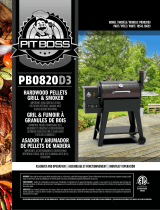 Pit Boss PB0820D3 Manuel utilisateur
Pit Boss PB0820D3 Manuel utilisateur
-
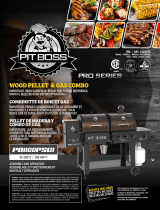 Pit Boss PBCBG110010002 Mode d'emploi
Pit Boss PBCBG110010002 Mode d'emploi
-
Pit Boss PB1600PS2 Manuel utilisateur
-
Pit Boss PB500LXW1 Le manuel du propriétaire
-
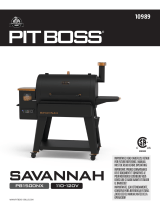 Pit Boss 10989 Savannah Wood Pellet Grill Le manuel du propriétaire
Pit Boss 10989 Savannah Wood Pellet Grill Le manuel du propriétaire
-
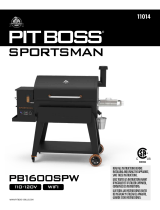 Pit Boss 11014 Manuel utilisateur
Pit Boss 11014 Manuel utilisateur
-
Pit Boss PB21FP Manuel utilisateur
-
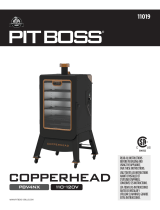 Pit Boss 11019 Le manuel du propriétaire
Pit Boss 11019 Le manuel du propriétaire
-
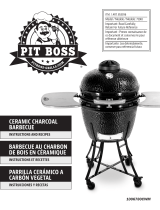 Pit Boss 71240 Instructions And Recipes Manual
Pit Boss 71240 Instructions And Recipes Manual
-
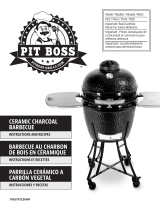 Pit Boss 71220 Le manuel du propriétaire
Pit Boss 71220 Le manuel du propriétaire
Autres documents
-
Victor DC050 Le manuel du propriétaire
-
Sportsman 5005166 Le manuel du propriétaire
-
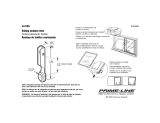 Prime-Line G 3135 Guide d'installation
Prime-Line G 3135 Guide d'installation
-
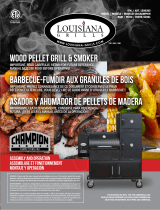 Louisiana Grills 61501 Guide d'installation
Louisiana Grills 61501 Guide d'installation
-
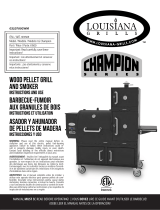 Louisiana Grills LGChampionEU Le manuel du propriétaire
Louisiana Grills LGChampionEU Le manuel du propriétaire
-
LG LG900C2 Le manuel du propriétaire
-
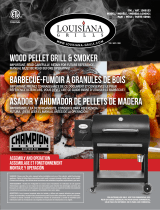 Louisiana Grills LG900C1 Le manuel du propriétaire
Louisiana Grills LG900C1 Le manuel du propriétaire
-
Masterbuilt MB20040220 Digital Charcoal Grill Manuel utilisateur
-
Broil King REGAL PELLET 400 SMOKER AND GRILL Le manuel du propriétaire
-
Masterbuilt MB20040220 Le manuel du propriétaire










































































































